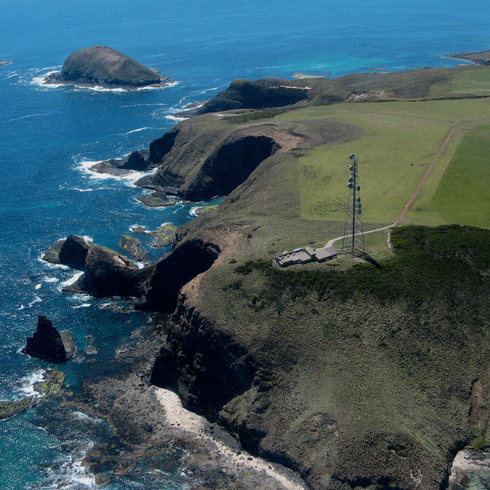
|
Published: 26 March 2012
Archived air points to more nitrous oxide from agriculture
A recent analysis of archived air samples from Tasmania and Antarctica confirm that an observed long-term rise in atmospheric nitrous oxide (N2O) levels is largely due to increased use of nitrogen-based fertilisers in agriculture.

|
|
Data from Australia’s Cape Grim air monitoring research station in north-west Tasmania has helped confirm that global fertiliser use is adding to nitrous oxide in the atmosphere. Credit:
CSIRO
|
N2O is a long-lived gas that contributes to both global warming and the thinning of the ozone layer. It is produced naturally by microbial activity in soils and the oceans as well as by agriculture.
Scientists had already measured a 20 per cent increase in atmospheric N2O since 1750. The new analysis, just published in the journal Nature Geoscience is drawn from atmospheric sampling at the Cape Grim Baseline Air Pollution Station, Tasmania, as well as air extracted from the Antarctic ice sheet over the period 1940–2005.
Its significance, says co-author CSIRO’s Dr David Etheridge, will be its contribution to the development of emissions protocols as countries step up their monitoring of gases contributing to global warming and ozone depletion.
Dr Etheridge said that through analysis of the different forms of the nitrogen and oxygen atoms (known as isotopes) that comprise the gas, researchers were able to determine that the increase of nitrous oxide was largely from agricultural sources.
‘Through these measurements and a close analysis of the record, we can also see seasonal cycles in nitrous oxide’s isotopic composition, as well as large year-to-year variations and long-term trends,’ he said.
He said the unique record of seasonal cycles allowed scientists to trace the production and loss of N2O, from its origins in the ocean and soils to its movement through the stratosphere where it contributes to breaking down ozone.
‘Until now the balance between the stratospheric sink and the oceanic source of nitrous oxide has been a key uncertainty in understanding nitrous oxide variations at the Earth's surface.
‘This new evidence of the nitrous oxide budget allows us to better predict its future changes – and therefore its impacts on climate and stratospheric ozone depletion – for different scenarios of fertiliser use in support of rising populations and increased production for bio-energy.’
Dr Etheridge said the record demonstrates the value of Australia’s investment, through CSIRO and the Bureau of Meteorology, in a world-class atmospheric monitoring station at Cape Grim since the 1970s, including the establishment of an air archive, which can be retrospectively measured as new technologies are developed.
This resource is complemented by the Australian Antarctic Division’s glaciology program, which has been able to access a natural archive of the past atmosphere at its primary drilling site at Law Dome, Antarctica.
Source: CSIRO



